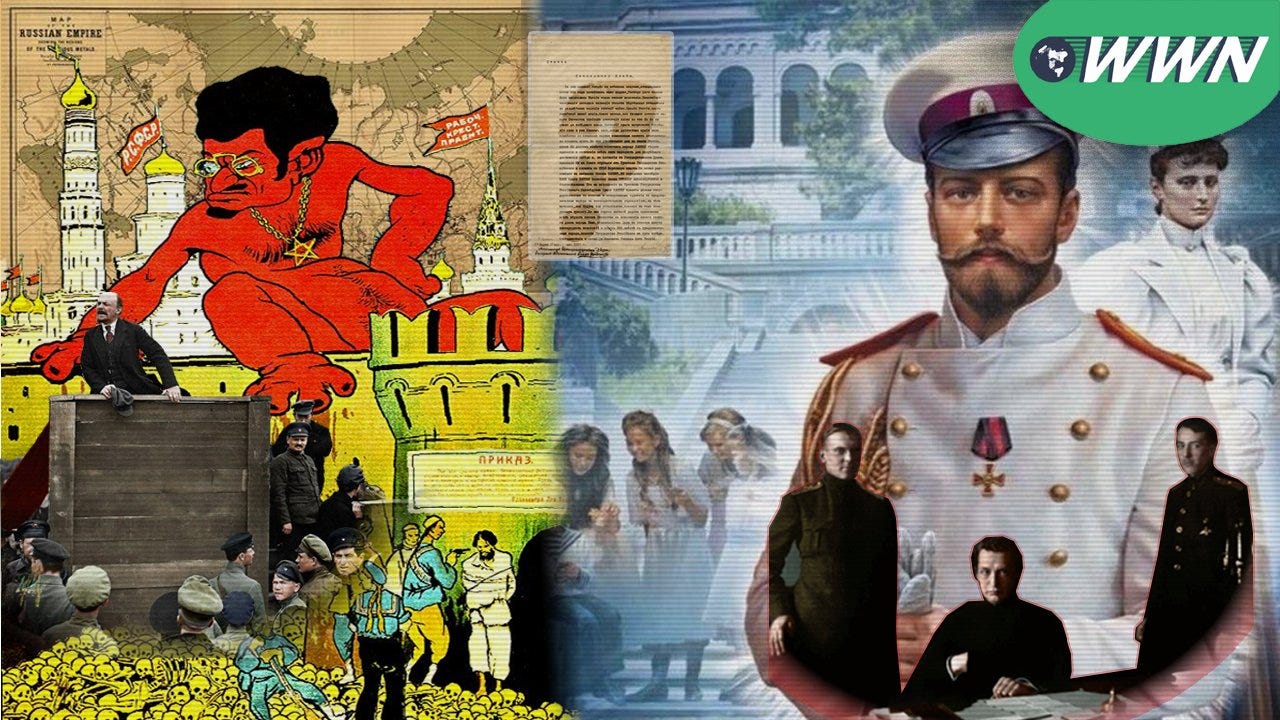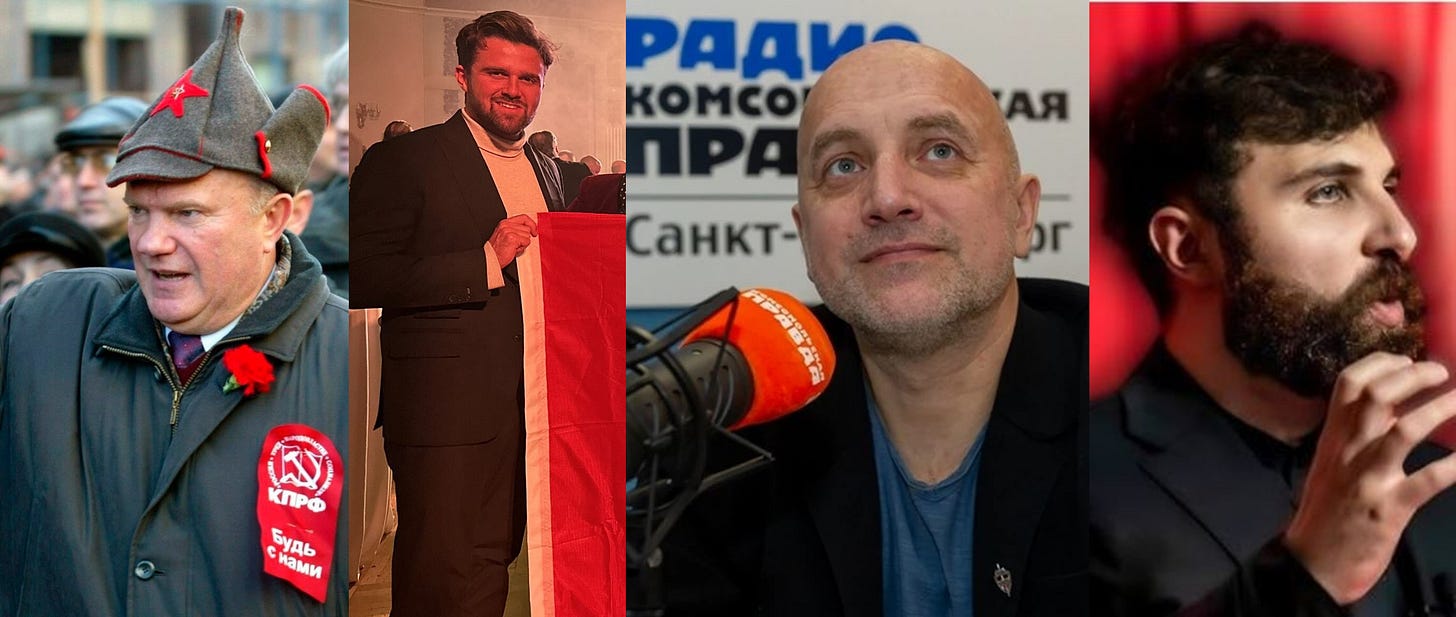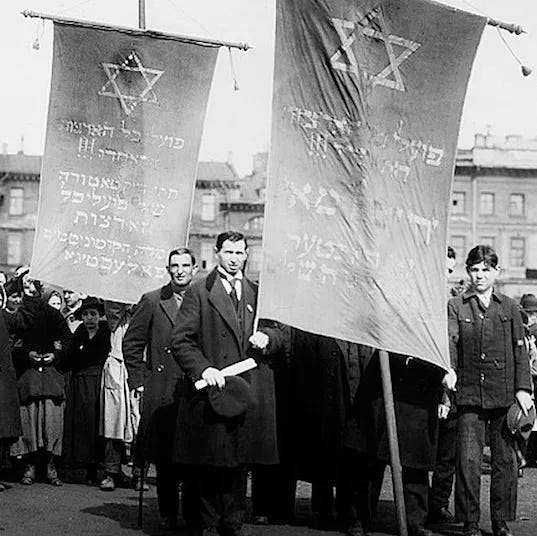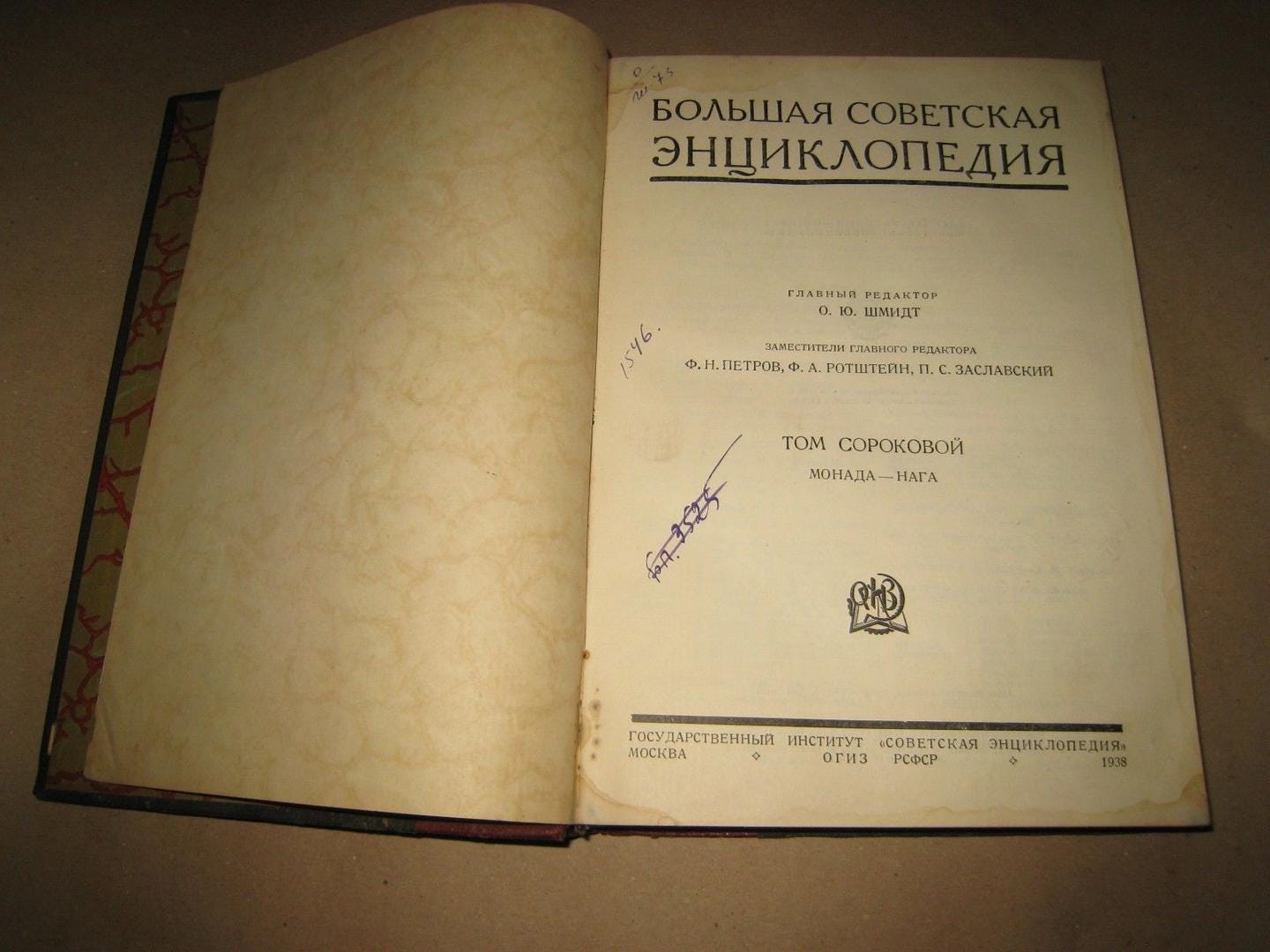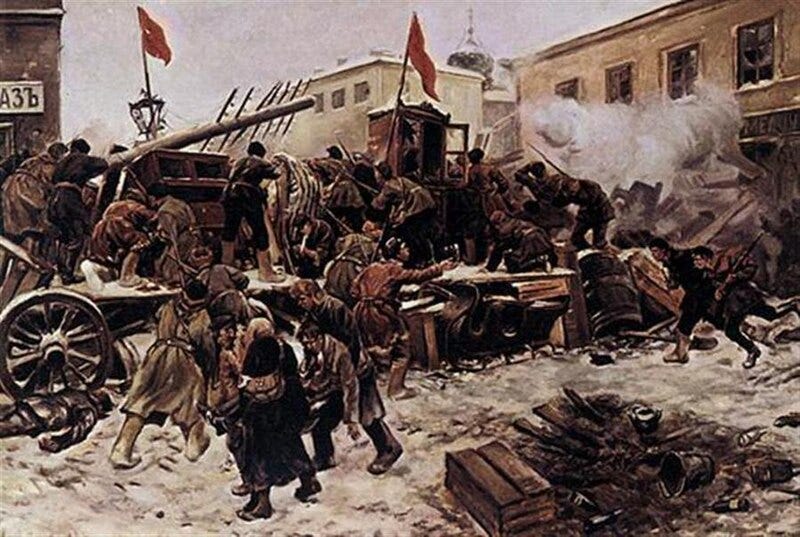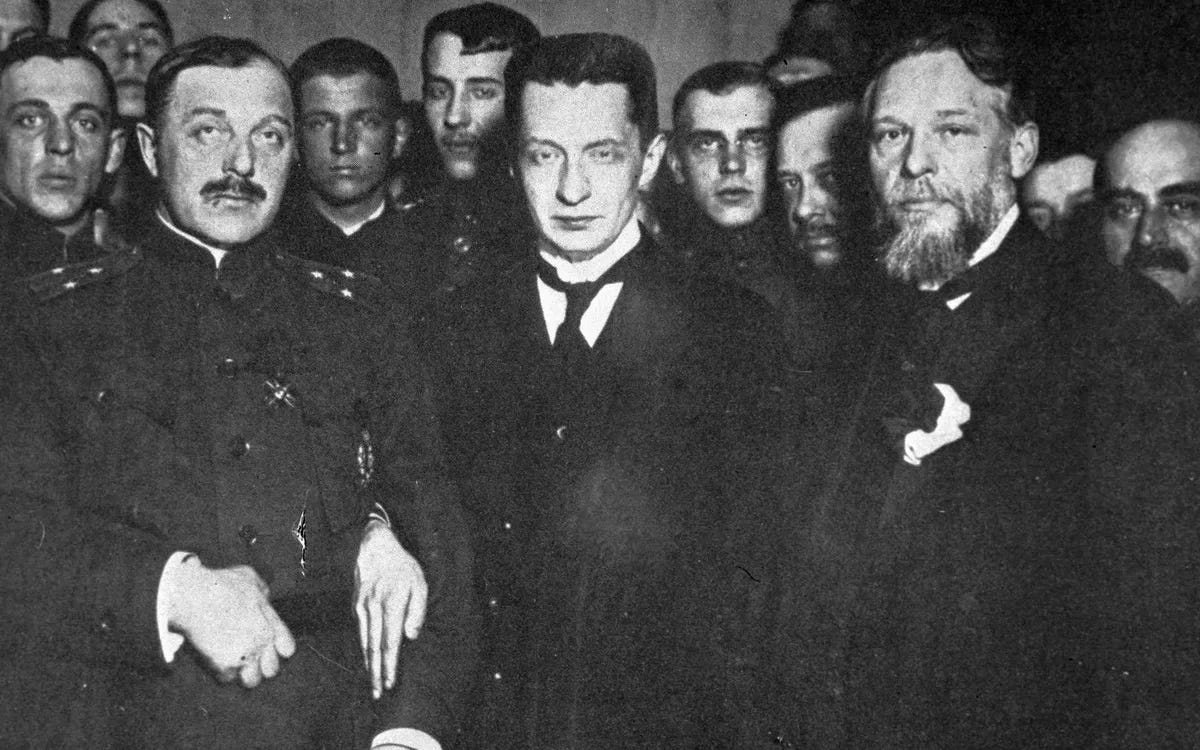The Bolsheviks and the February Revolution
Investigating the connections between the February & October Russian Revolutions of 1917.
In recent years, a neo-Bolshevik narrative has been actively promoted, claiming that the Bolsheviks allegedly played no role in the so-called ‘February Revolution.’
Through this revisionist narrative, neo-Bolsheviks construct a false propaganda narrative that shifts responsibility for the 1917 Revolution (coup), the collapse of the Russian Imperial administrative system, and, ultimately, the ensuing bloody civil war onto the so-called ‘February liberals.’
These liberals, Freemasons, and active revolutionaries are then shamelessly equated with the heroes of the White Movement and White Army.
Thus, responsibility for the crimes of 1917 is placed on conservative and liberal-conservative circles, while left-wing radicals and other anti-Russian destructive elements are cleverly shielded from criticism within this narrative, as if to say, "they weren’t even participating and were not present."
This manipulative narrative was invented quite recently, as authentic Bolsheviks, on the contrary, did not shy away from their role in Russia’s collapse and actively emphasized their involvement in the February events of 1917.
Soviet historians, though prone to ideological delusions and often concealing or distorting facts, were still significantly more honest than their modern neo-Bolshevik propagandist successors.
The Great Soviet Encyclopedia recounts the Bolsheviks' role in the February events as follows:
"The Bolshevik Party was the only party that prepared the masses for decisive battles against autocracy… The Bolshevik Party put forward the slogan of turning the imperialist war into a civil war, educating the masses in the spirit of consistent revolutionary struggle against tsarism… On the eve of the February Revolution of 1917, it had about 24,000 members. The Petersburg Committee led the largest party organization in the country, with 2,000 members. The Petersburg Committee of the party had several underground printing presses, where revolutionary leaflets were systematically printed. From late July 1914 to early March 1917, local party organizations issued about 2 million leaflets. Guided by Lenin’s strategic and tactical directives, the Bolsheviks at rallies, workers’ meetings, and in leaflets called the masses to resolute struggle against autocracy."
In February 1917, the Bolsheviks indeed had thousands of propagandists, militants, and terrorists (with ample funding) and played a significant role in the events of the so-called ‘February Revolution' and in the Petrograd Soviet, the main body of left-wing radicals. The Bolsheviks possessed expensive, modern printing equipment and substantial, regular financial backing, which they used to produce millions of propaganda leaflets and other agitational materials calling for a state coup, the defeat of the Russian army fighting against the Germans, and the unleashing of a fratricidal civil war.
The Great Soviet Encyclopedia also informs us that it was the Bolsheviks who dealt the most severe blow to the back of the Russian army, which was fighting German occupiers:
"On January 9 (22), 1917, at the call of the Bolsheviks, demonstrations and political strikes took place in several cities across the country. The largest strike during the war years occurred in Petrograd, involving about 145,000 workers (!). This marked the beginning of a transition to mass street actions and open political struggle against autocracy. On February 23 (March 8), a revolutionary explosion occurred, marking the start of the February Revolution. Petrograd Bolsheviks used International Women’s Day for rallies and meetings…On February 27 (March 12), the general political strike grew into an armed uprising."
The authors of the Great Soviet Encyclopedia openly glorify the February Revolution:
"The victory of the February Revolution turned Russia into the freest country among all warring powers, ensuring the masses the opportunity to widely enjoy political rights."
In reality, February brought no ‘freedoms or rights,’ as only a law enforcement system could guarantee them, and the left-wing radicals who took power from the Tsar consistently destroyed it, physically eliminating professional police officers, gendarmes, and city guards.
The Bolsheviks joyfully welcomed and supported the February Revolution, criticizing it only for its insufficient radicalism.
At the First All-Russian Congress of Soviets of Workers’ and Soldiers’ Deputies, Lenin declared that as a result of the February 1917 events, "Russia took a gigantic step forward." At a party meeting on March 29, 1917, Stalin stated: "The Provisional Government has effectively taken on the role of consolidating the gains of the revolutionary people."
In the first issue of 1917 (dated March 5) of the Bolshevik propaganda newspaper Pravda, a detailed report is provided on the participation of the Petersburg Committee (“P.K.”) of the RSDLP in the so-called February Revolution:
"The Course of Events How quickly it all happened! Like a fairy tale, like a fantasy - beautiful and triumphant. In a single day, so much was experienced that in other times would not be felt in a year, and a few days separated you from the past by an abyss. Until early February, the atmosphere was somehow particularly tedious and stifling - truly, like before a storm. There was nowhere to turn, and it was almost impossible to breathe. The incredibly rising cost of living, the shortage of one or another essential product, terribly agitated the masses.
Leaflets (unsigned) began circulating in factories, criticizing the government’s policies and calling on workers to march to the Tauride Palace on February 14 (the opening day of the State Duma) with demands for a Provisional Government. Meetings were held at factories where supporters of this call ‘Gvozdevites’ spoke. It is said that in connection with this, the ‘workers’ group’ at the Central Military-Industrial Committee was arrested. The Petersburg Committee of the RSDLP began its actions on February 10, the day of the trial of five deputies. However, since some factories were not operating at all on the 10th, others worked only until noon (it was a Friday during Maslenitsa), and due to disagreements among leading groups, the day was unsuccessful in terms of action. Meetings were held at many factories, where speakers of all persuasions spoke, and resolutions were adopted. About 10,000 leaflets from the P.K. were distributed. In Kolpino, an economic strike began on February 8; from the 10th to the 15th, the factory was closed by the administration ‘for repairs.’
During these days, several rallies were held on the streets of Kolpino. Cossacks were present but did not disperse them. There were arrests. On the evening of the 13th, meetings were held at factories. At some, a proposal was adopted to not go to work on the 14th. Literature was distributed. Demands for a Provisional Government were raised, and the need to embark on revolutionary struggle was emphasized, primarily to secure ‘freedom of coalitions, equality of nationalities, and amnesty for all political prisoners.’ The meetings were held under the slogans of the P.K. The number of strikers during these days reached up to 80,000. On the 15th, a meeting at a factory drew about 6,000 people. A speaker from the city spoke. A resolution from the P.K. was adopted."
Note the enthusiastic tone of the Bolshevik newspaper’s authors toward the tragic events of February 1917. The Second Patriotic War (World War I) was in full swing, yet the left-radical Bolshevik party printed anti-state leaflets, organized strikes and rallies, thereby sabotaging production in the rear of a Russia at war with an external aggressor. In February 1917, the Bolsheviks engaged in anti-state activities and agitation, which, in the context of war, can only be interpreted as working in the interests of Germany and its allies.
It is clear from this excerpt what truly mattered to the Bolsheviks at the time: securing the release of their left-radical accomplices, extremists, and terrorists from prisons, advocating for the rights of certain "nationalities," and destroying the institutions of Russian statehood, including the Russian army.



